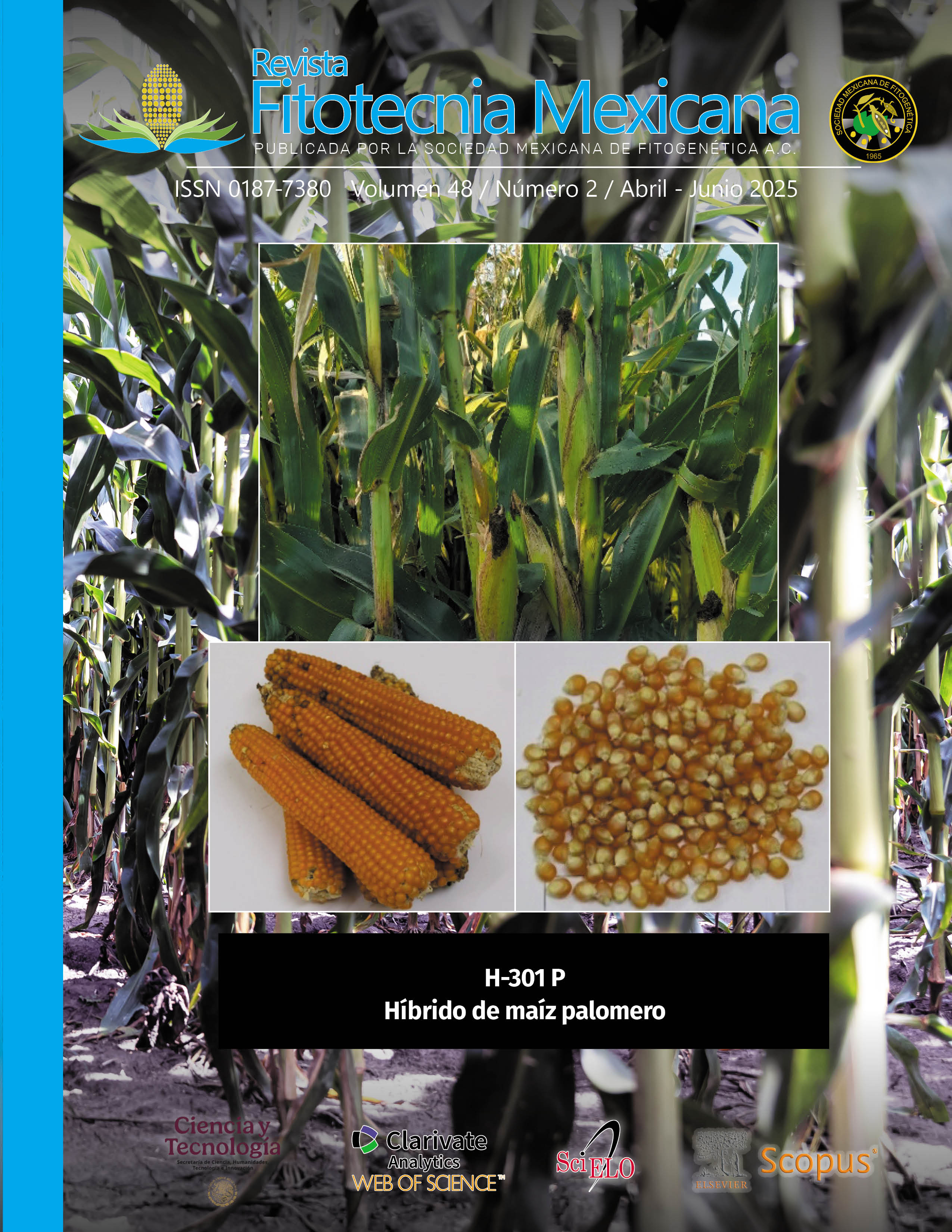YELLOW CORN VARIETIES FROM RECURRENT SELECTION, ANOTHER OPTION FOR CULTIVATION IN CHIAPAS, MEXICO
Main Article Content
Abstract
Mexico imports up to 17.3 million tons of yellow corn to meet the needs of human consumption and food industry. In Chiapas, during the year 2022, 85 thousand hectares were planted to yellow corn, from which a production of 144 thousand tons was obtained, with an average yield of 1.7 t ha-1. To help reduce this production deficit, in the present study conducted in 2022, the productivity and grain quality were evaluated in 23 experimental varieties from four cycles of recurrent selection carried out on a yellow maize population, along with a landrace as a control, using a 4 × 6 rectangular triple lattice experimental design in the Autumn-Winter 2021 season at the Center of Chiapas Experimental Station of the National Institute of Forestry, Agricultural and Livestock Research (INIFAP), in Ocozocoautla, Chiapas, Mexico. The measured traits included days to female flowering, days to male flowering, plant height, number of grain rows, number of grains per row, ear diameter, cob diameter, ear length, grain percentage, grain moisture, test weight, 200 grains weight and grain yield. Analysis of variance was performed using SAS, version 9.3 and, where applicable, the Tukey multiple mean test to detect the best varieties. Significant differences were found in the measured characteristics of plant, ear and grain of the varieties. The yellow-grain experimental variety V1A stood out with a grain yield of 5.2 t ha-1. Significant differences were found in grain quality characteristics among varieties, revealing some of them with high-quality grain.

